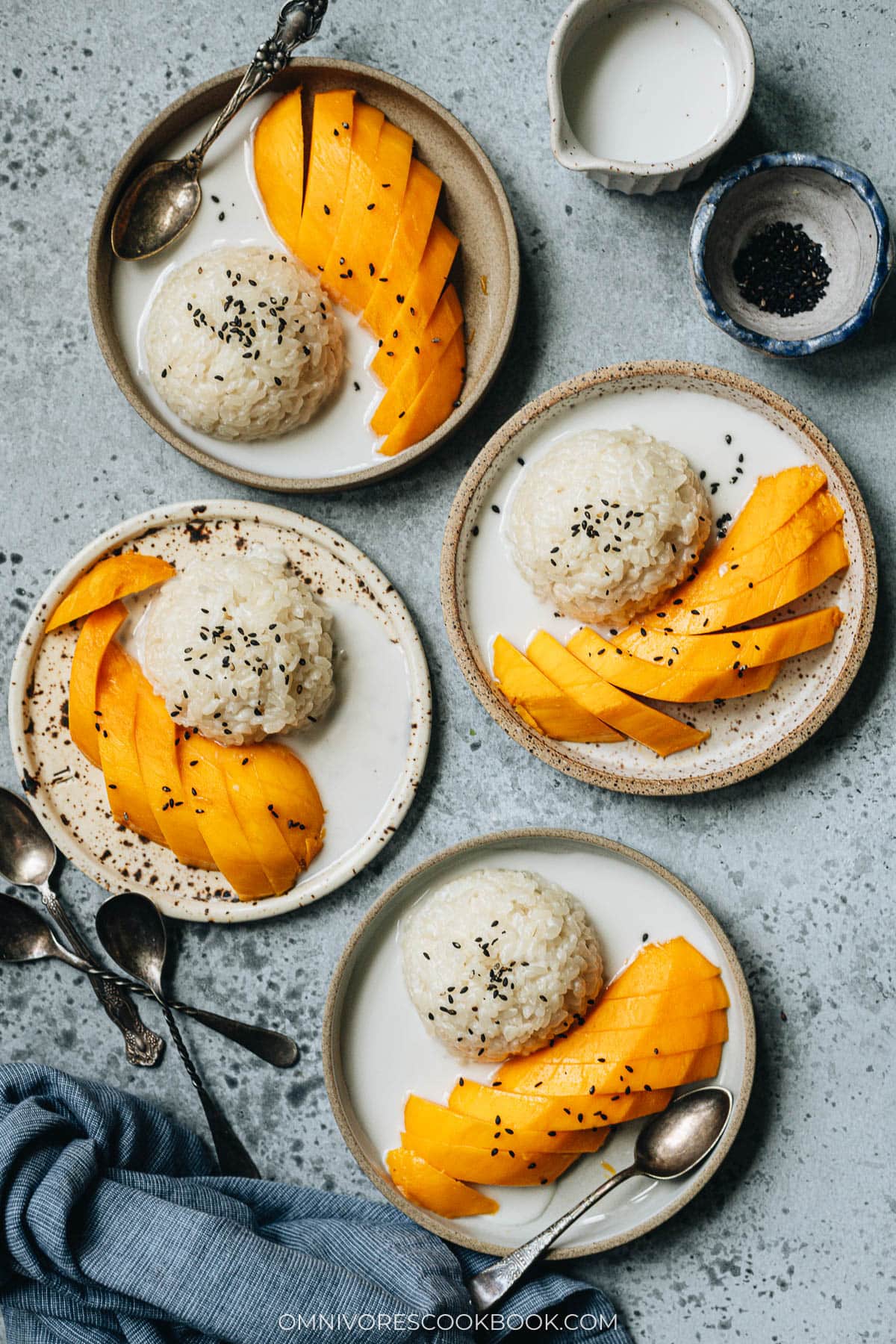
Sticky rice pairs beautifully with sweet coconut sauce and fresh mango slices to create this delicious, simple dessert. Sometimes called coconut sticky rice, mango sticky rice is a popular Thai dessert you can easily find at most Thai restaurants. But the homemade version has less sugar, tastes just as satisfying, and is relatively easy to prepare. It’s one of my favorite desserts to make during peak mango season.
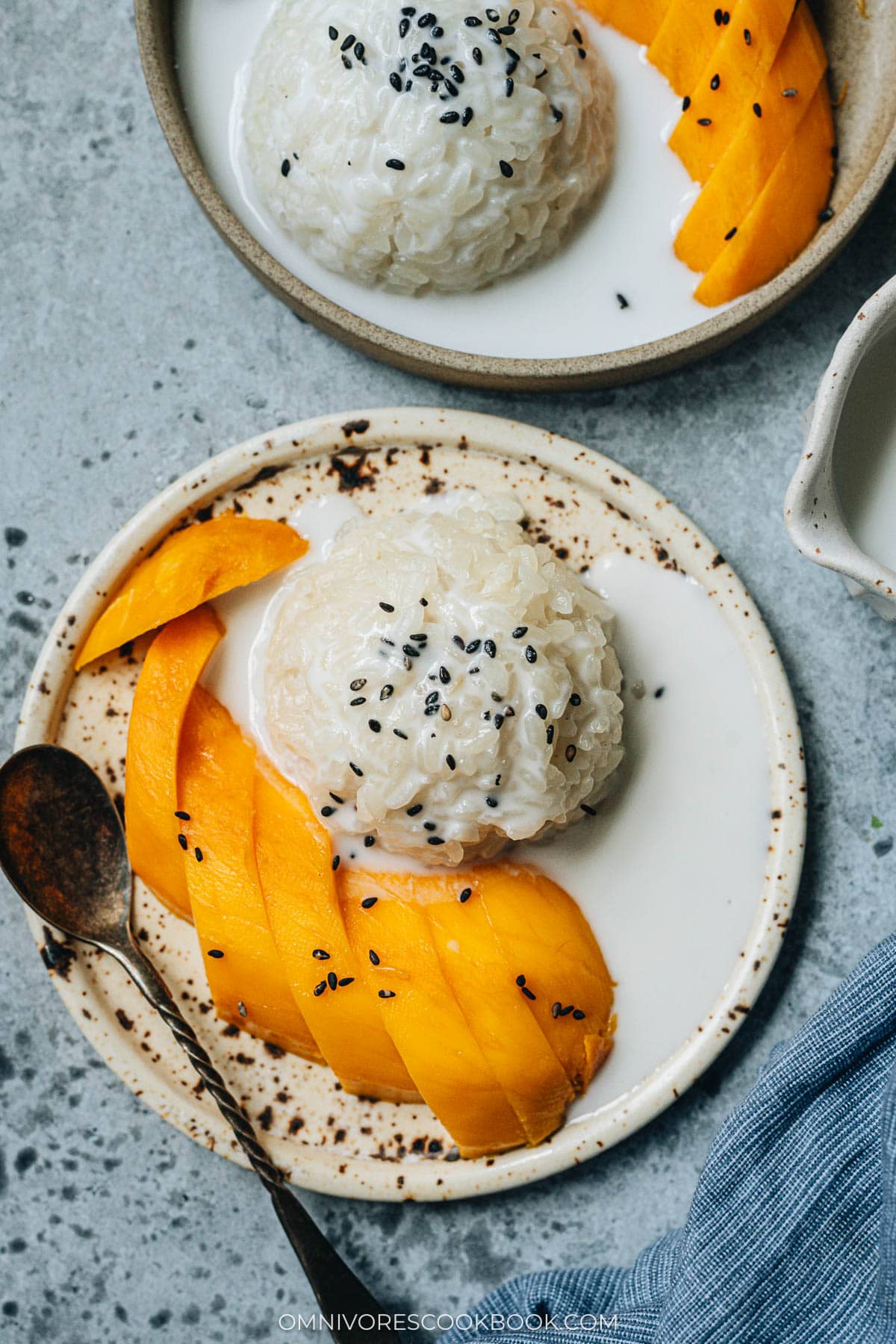
Ingredients
You only need 5 basic ingredients to make my coconut rice with mango recipe:
- Glutinous rice
- Coconut milk
- White sugar
- Salt
- Mangoes
I like to use toasted sesame seeds for garnishing. Depending on the type of coconut milk you use, you might need a bit of cornstarch to make a slurry to thicken the sauce. (See more about the sauce in the recipe footnote below.)
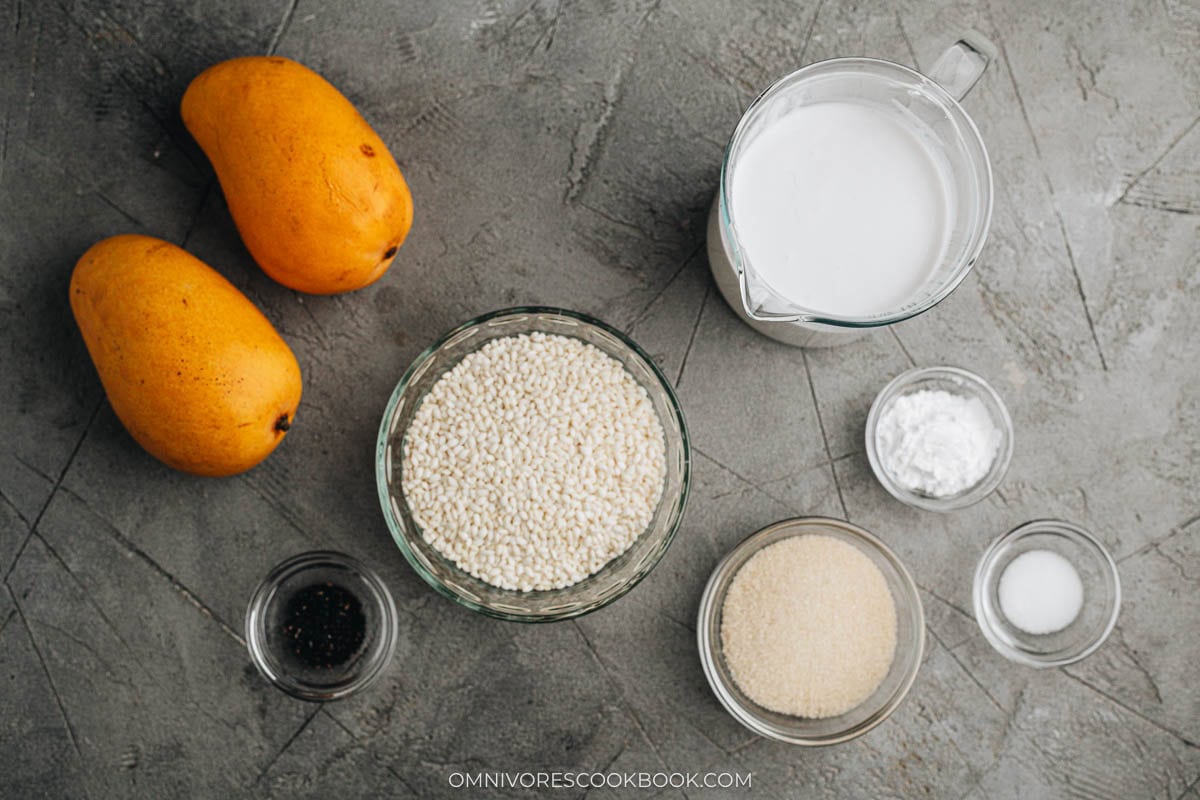
Sticky rice
Sticky rice (糯米), often called glutinous rice or sweet rice, is a gluten-free black or white rice. The cooked grains are semi-opaque and have a gooey, sticky texture. It is different from sushi rice, another type of short-grain rice.
Sticky rice is commonly used in Chinese cooking, such as when making Zongzi (sticky rice dumplings), meatballs coated with sticky rice, pineapple rice, and sticky rice stuffed lotus root. The texture of sticky rice is quite different from that of regular rice. It’s a key ingredient and the only authentic type of rice for mango sticky rice recipes. You can find it at most Asian markets and online.
Fresh, sweet mango
You can use any ripe mango in mango sticky rice (not the green mango used in recipes like Thai mango salads). Several varieties of mango will work.
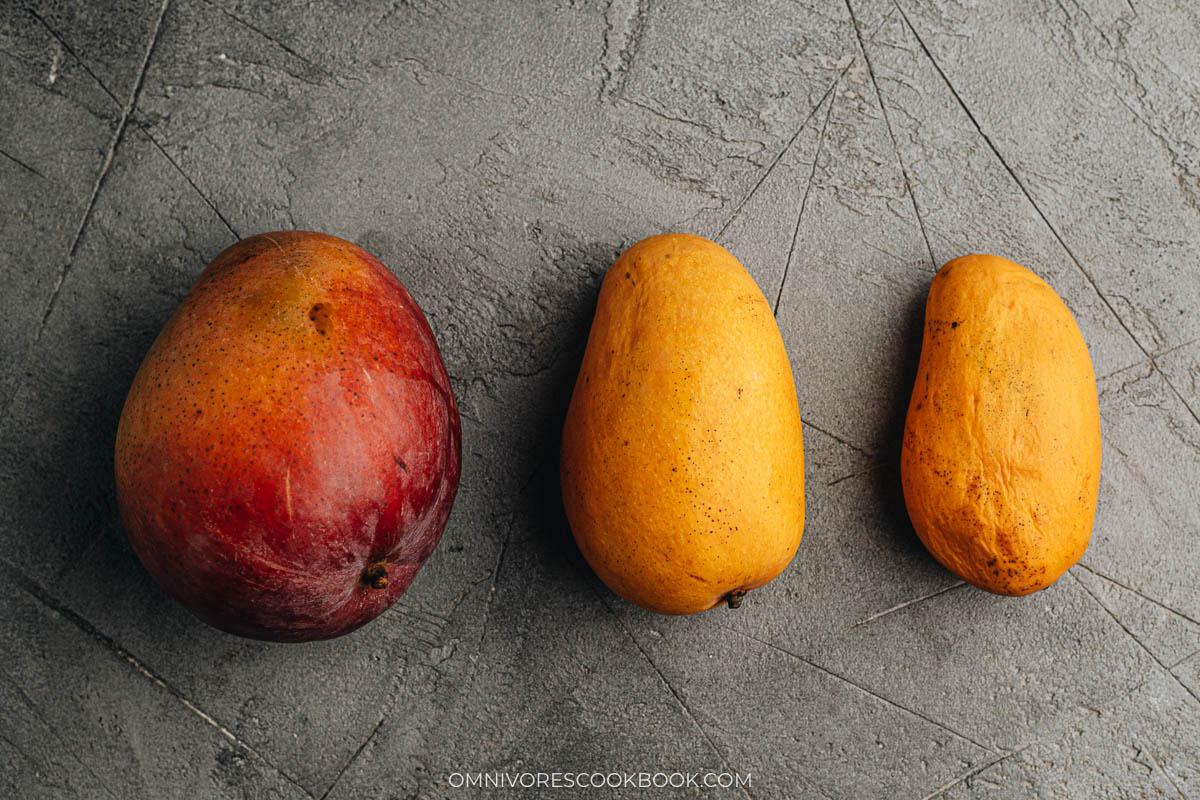
I like to use larger Ataulfo mangoes (the one in the middle of the picture above), which weigh about 8 ounces (225 grams) each. Half a large Ataulfo mango yields the perfect amount of fruit for one serving of mango sticky rice.
Larger Tommy Atkins mangoes work well, too. One of those weighs about 1 pound (450 grams) and yields more fruit. If you use the Tommy Atkins variety, you only need 2 mangoes for this recipe.
Ripe mangoes are key to creating the best classic mango sticky rice. If your mangoes are still tough, store them at room temperature to let them ripen further before cutting them. Once the mangoes get soft, transfer them to the fridge so they will stay fresh without overripening.

Reduced sugar content
Sometimes, I see recipes calling for 1/2 cup of sugar when cooking 1 cup of rice. That’s way too much sugar for me! I used a total of 1/4 cup of sugar for 1 cup of rice. Plus, I made more sauce in this recipe, so you will have more flexibility to serve the dessert how you like it.
How to make mango sticky rice
Cooking mango sticky rice is super easy:
- Soak the rice in cold water
- Drain rice, then steam it
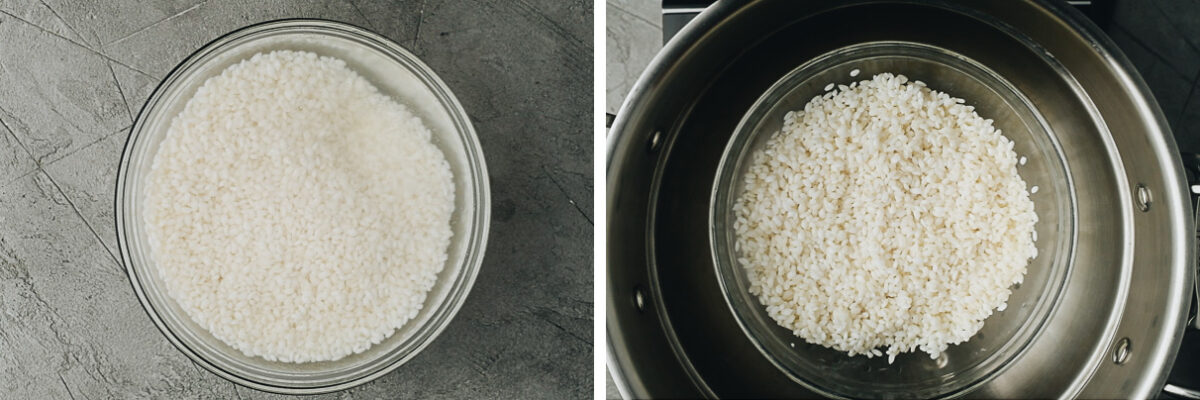
- Mix the sauce ingredients and gently heat them up
- Combine some of the warm coconut milk mixture with the steamed rice
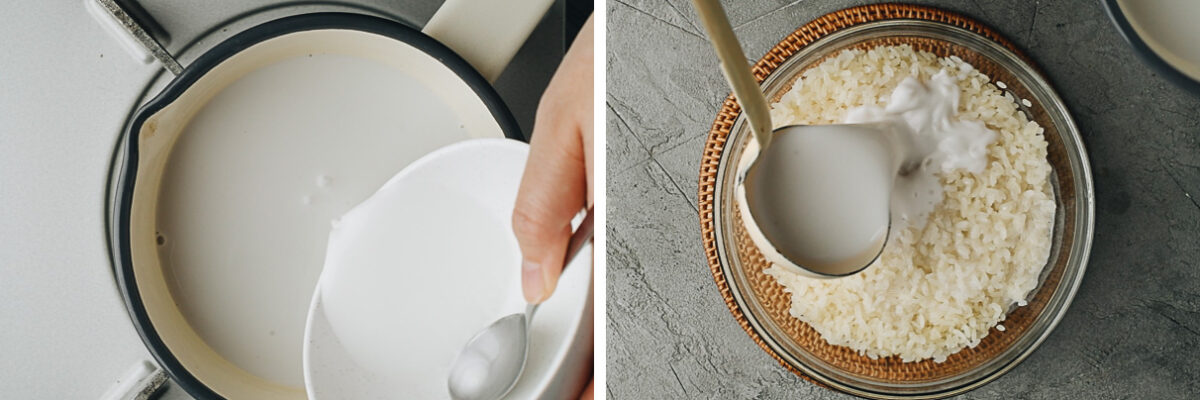
- Portion out the sweet rice to each serving bowl
- Add the mango and garnish with sesame seeds and more thickened coconut sauce
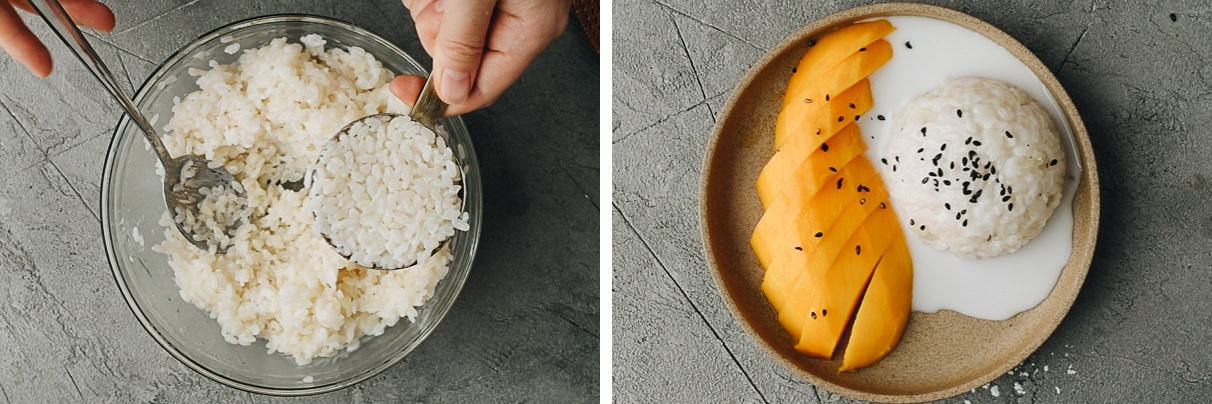
Prepare sticky rice in advance
To achieve the best results, always soak the rice before steaming it. You’ll notice in the recipe below that I don’t add water to the rice when steaming it. You can steam in various ways. For example, use a bamboo steamer basket or a makeshift steamer with a sieve over a pot of water.
If you prefer a very gooey and sticky texture, soak the rice overnight in the fridge. I like a chewier texture, so I usually only soak it for 1 to 2 hours the day I make the dessert.
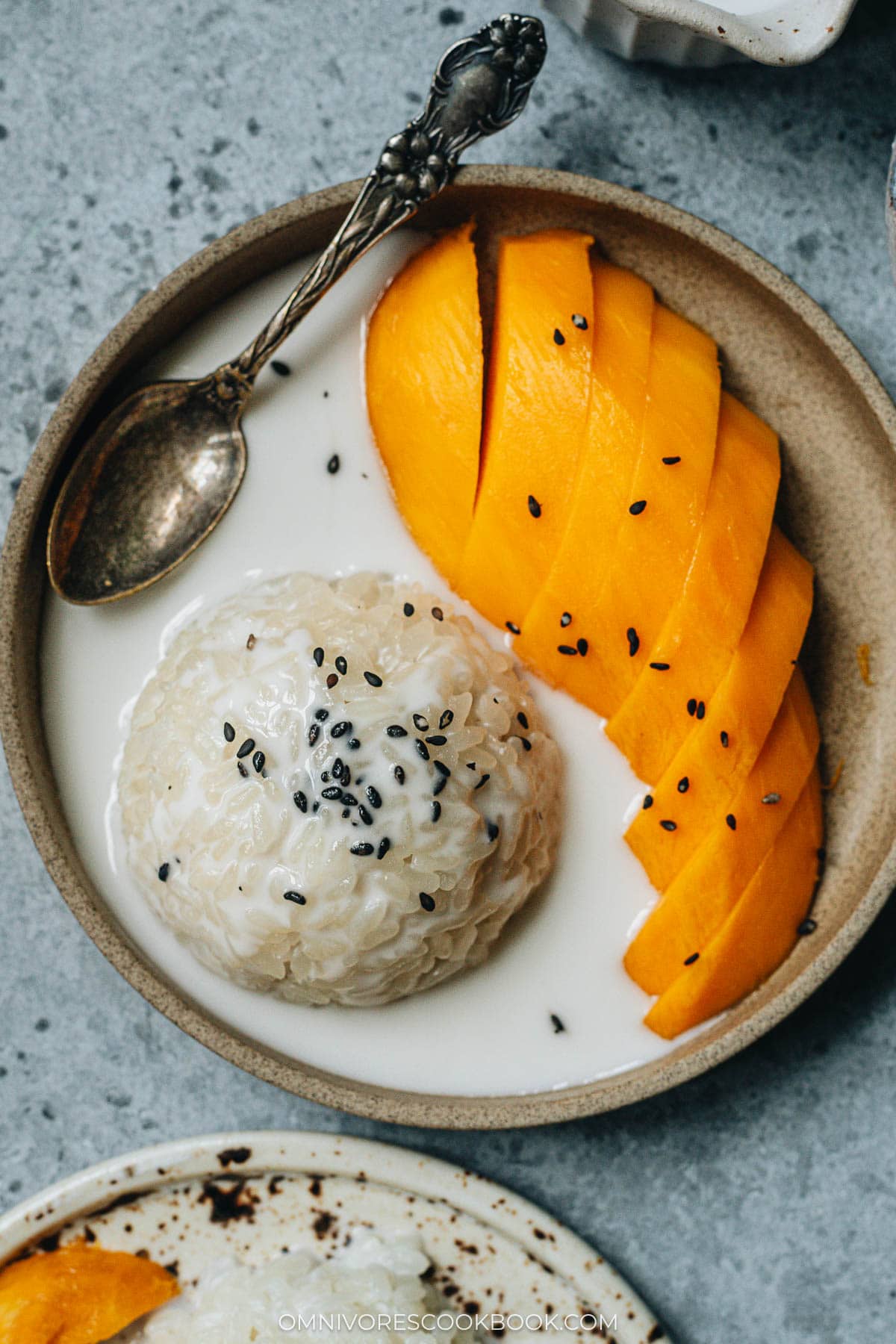
Frequently asked questions about mango sticky rice recipes
Can I make mango sticky rice ahead of time?
Mango sticky rice tastes the best when it’s freshly made. I highly recommend making it the same day you plan to serve it.
If you must make mango sticky rice beforehand, store the rice and sauce separately in the fridge. Before serving, gently heat the rice in the microwave or a steamer until warmed and softened. Otherwise, the rice will have a very tough and dry texture.
Can I swap coconut milk for coconut cream?
I make my mango sticky rice with coconut milk. A good canned coconut milk works well, or you can use fresh coconut milk if available.
Some mango sticky rice recipes use coconut cream for a thicker, creamier sauce. However, if you make a coconut cream sauce, you would need to omit the cornstarch mixture and maybe even add water because the consistency is different.
What type of sugar should I use?
White granulated sugar is preferred over palm sugar or brown sugar, which will darken the dessert.
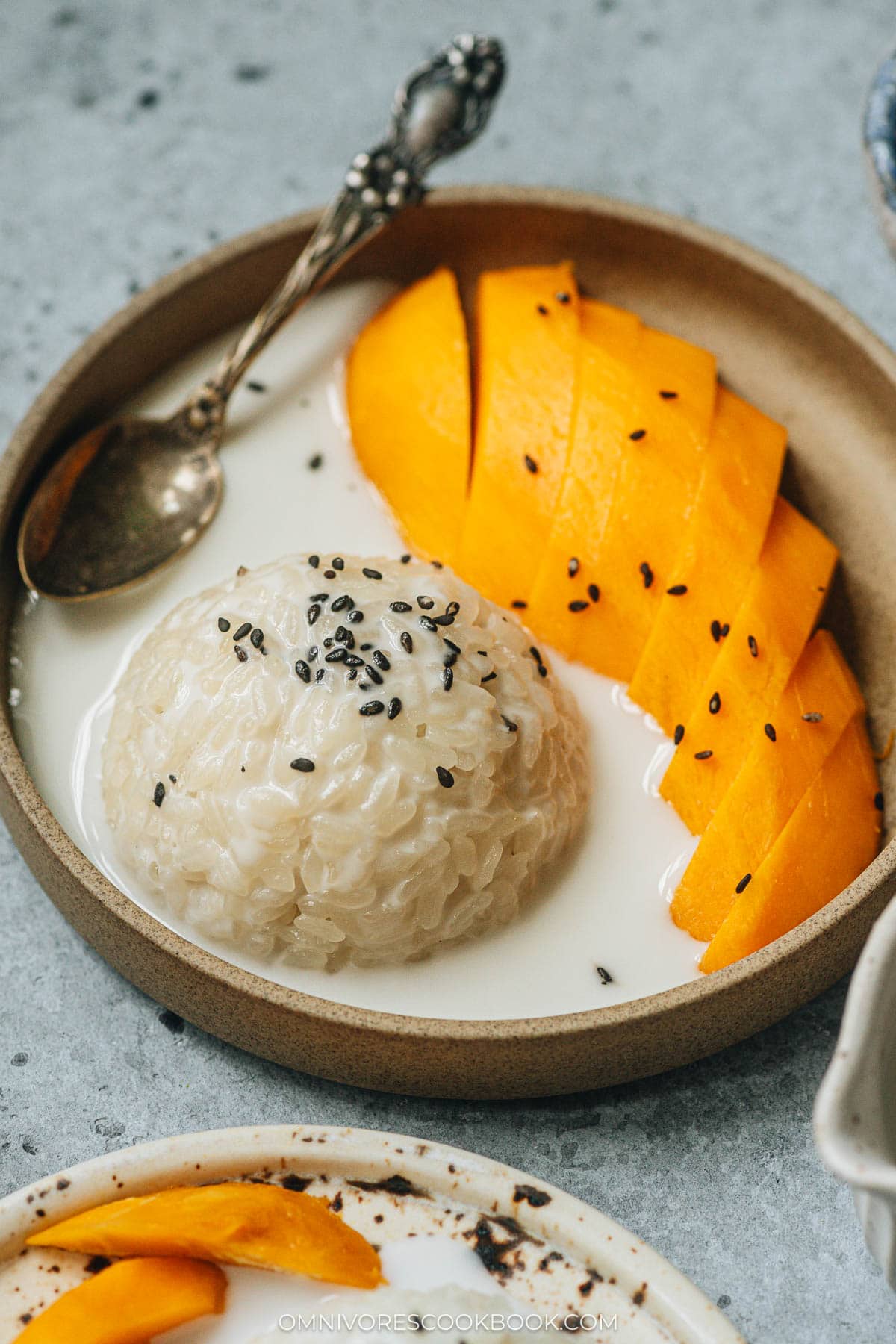
More delicious Asian dessert
- Mango Sago
- Banana Fritters
- Red Bean Popsicles
- 4-Ingredient No Churn Black Sesame Ice Cream
- Sticky Rice Cakes with Red Bean Paste
Chinese Cooking Made Easy
Are you new to this website? This free email series is a great place to start. I’ll walk you through a few of my most popular recipes and show you how and why they work. You’ll quickly start to cook better Chinese food in your own kitchen.
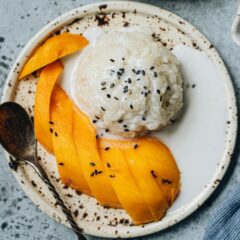
Mango Sticky Rice
Ingredients
- 1 cup uncooked sticky rice
- 1 can full-fat coconut milk (13.5 oz / 400 g can)
- 1/4 cup sugar
- 1/2 teaspoon salt
- 2 teaspoons cornstarch (Optional)
- 3 ripe mangoes , peeled and sliced
- Toasted sesame seeds for garnish (Optional)
Instructions
- Rinse the sticky rice with tap water and use your hand to gently stir it. Drain the water to remove the excess starch. Repeat once, then add cold water to cover. Soak the sticky rice for a minimum of 1 hour, or up to overnight in the fridge. Once soaked, rinse again and drain the water.
- Transfer the rice to a heatproof bowl, add about 2” of water to your steamer (not into the rice), place the heatproof rice bowl on the steaming rack in the steamer, and cover the steamer. Turn to medium-high heat to bring the water to a boil. When the steam starts to come out of the pot, turn to medium heat. Steam for 20 to 25 minutes, until the rice is cooked through, with no hard raw bits in the middle. Remove the pot from the stove. Let sit, covered, while you prepare the other ingredients.
- Make the sauce when the rice is cooking. Combine the coconut milk, sugar, and salt in a saucepan. Cook over medium heat or medium-low heat until the mixture is hot and the sugar is melted. Do not bring the coconut sauce to a boil.
- (Optional) If the coconut milk you’re using is thin: Combine the cornstarch and 4 tablespoons of water in a small bowl. Stir to completely dissolve the cornstarch. Add half of the slurry to the sauce. Stir immediately to thicken the sauce. You can adjust the thickness of the sauce by slowly adding a bit more water or cornstarch slurry, if needed. The sauce shouldn’t be too thick, but should coat the back of a spoon. (*Footnote 1)
- Carefully remove the bowl of sticky rice from the steamer with your oven mitts on. Pour 1 cup of the sauce into the bowl. Stir to mix well until the sauce is fully absorbed.
- The mango sticky rice is ready to serve when the rice mixture and the sauce cool to room temperature or lukewarm.
- To serve, transfer 1/3 cup of the coconut rice to each of several small serving bowls or plates. Place the sliced mango on the side. Pour a few spoonfuls of the extra coconut sauce on top of the rice. Garnish with toasted sesame seeds, if using. (*Footnote 2)
Video
Notes
- Most of the time you don’t need the cornstarch slurry to thicken the sauce, since the coconut milk should have a nice creamy texture. But I’ve come across some brands of coconut milk that have a thinner consistency. Or sometimes you might prefer a thicker and creamier sauce. In this case, adding cornstarch will give the sauce a nicer texture.
- 1/3 cup rice with half a mango creates a great dessert size. But if you prefer a larger dessert or want to serve this one as a standalone snack, you can use 1/2 cup rice per serving to make 4 servings in total.
Nutrition
Have a question or feedback? Add a Comment
Did you make this? I want to see! Tag @OmnivoresCookbook on Instagram, and rate the recipe below.

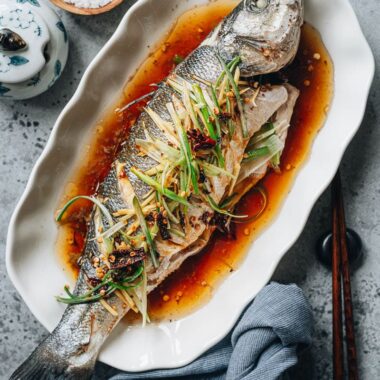
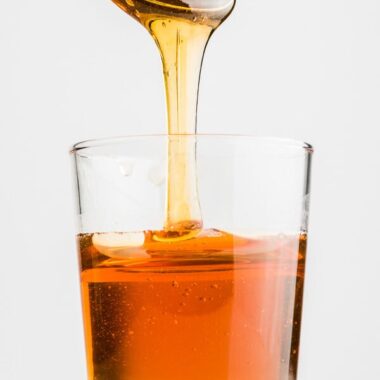
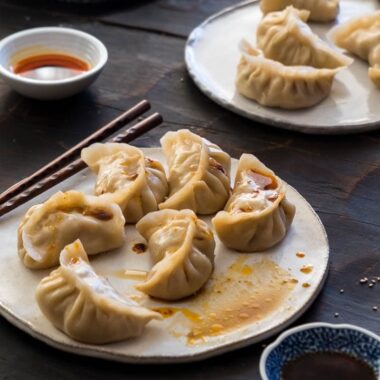
Mia
Great recipe! I will say I was initially confused about the nutrition information. It states per serving it is 288 kcal, wouldnt it be 288 cal?
Maggie Zhu
Your question got me super confused too so I had to google 😅 In short, “kcal” is kilocalories. It’s the unit for food energy; on the other hand, calories are the unit for energy, but they’re counted per thousand (ie kilocalories) to be useful for nutritional discussions. In the US, it spells “Calories” with a capital C. As in, one Calorie is one kilocalorie, which is one thousand calories. So basically kcal and cal are interchangeable.
PS. the unit is by default in my recipe card so I never give it a second thought.
MK
I loved this recipe. It was easy and tasted just as delicious as the mango sticky rice we were served in Bangkok. Perfect to share with family and friends when we returned from Thailand so they might feel the joy of Thai street food.
Carole
Should you use coconut milk, or perhaps if you use coconut cream, the sauce would be thicker?
Maggie Zhu
If you use a good coconut milk, the sauce should be thick enough. If the can of coconut milk you use is separated, I would use the top layer (the creamy part) and discard the watery part, and the sauce will be creamier.
I wouldn’t use coconut cream directly, which is a bit too thick.
Jackie T
Can you substitute black glutinous rice for white glutinous rice?
Maggie Zhu
Yes you can! I like to do that myself sometimes and it is very tasty 🙂
Oshada
absurdly delicious and with so few ingredients! one of the best recipes ever
Heather
Perfect recipe for mango sticky rice! I’ve tried a few others and they weren’t hitting the spot, but this one did! I did use the 1/4 cup sugar, since I was serving it to guests, but I would probably cut the sugar back if just making it for myself.
Heather
Perfect consistency in the rice, and just the right flavor! I used sweetened condensed milk instead of sugar, so it turned out a bit sweeter than the recipe probably called for, but it was amazing! Will definitely make this again!
Maria Leyva
Love the healthy version
Rebeccah
Delicious!!! I added some sweetened condensed milk to the mixture instead of sugar. My only problem was that the sauce wasn’t very thick- quite runny. Even with the cornstarch. It didn’t alter the taste though.
Jenni
For the Sweet Rice can u make in the rice steamer?
Maggie
Hi Jenni, I’m pretty sure can. I’ve read a guide using this method:
Add 1 cup sticky rice with 1 1/4 cup water in the rice cooker. Let the rice soak and turn on the rice cooker directly to cook it (without draining the water).
Deston Hand
What if I don’t have a steamer? Can I cook the sweet rice by just boiling water? What do you recommend? thanks!
Maggie
Hi Deston, here is an article on how to cook the rice without a steamer:
https://www.tablespoon.com/meals/how-to-make-sticky-rice-at-home
Danielle Wolter
I just LOVE sticky rice! I usually eat it with savory dishes, but also love mango sticky rice at Thai restaurants. I’ve never made it myself. I also prefer a less sweet dessert so I’d go with your recommended sugar! The mango is sweet enough 🙂
Healthy Kitchen 101
This is one of my fav Thai food! I still remember the first time eating this rice in my Bangkok trip, I’m totally hooked 😍 I always consider that Thailand has the best street foods ever 🙂
– Natalie